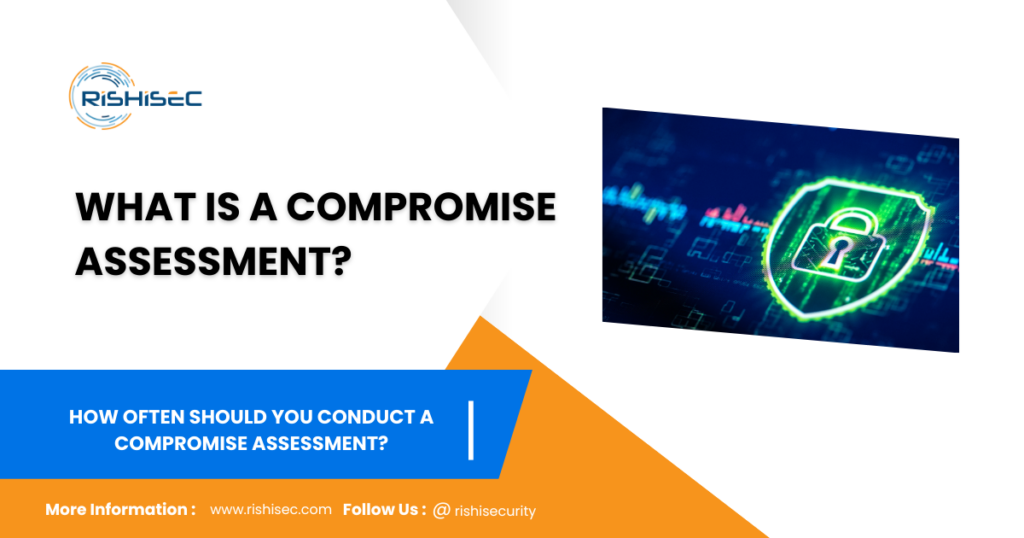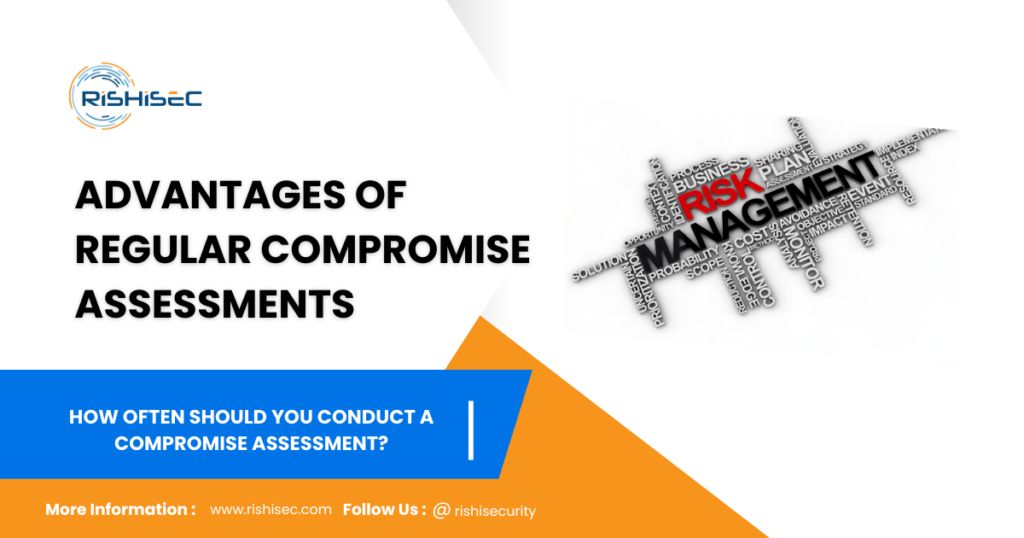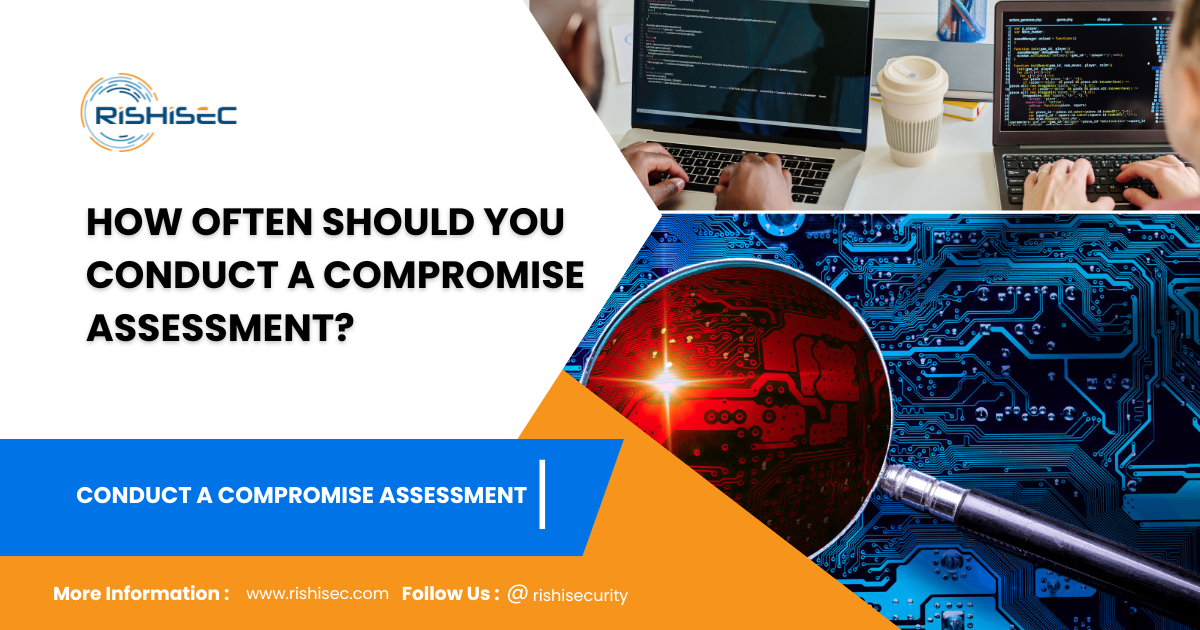Contents
In the ever-evolving landscape of cybersecurity, maintaining a robust defense mechanism is paramount. One key component of an effective security strategy is the regular conduct of compromise assessments. This guide explores the optimal frequency for these assessments, highlighting their significance in fortifying your organization’s defenses.
What is a Compromise Assessment?

A compromise assessment is a critical evaluation designed to uncover and address potential security breaches before they can be exploited by malicious actors. This assessment provides a comprehensive overview of your organization’s security posture, identifying vulnerabilities and threats that could compromise your digital assets. By proactively identifying weaknesses, you can implement corrective measures to enhance your security.
Determining the Frequency of Compromise Assessments
The frequency of compromise assessments can significantly impact the effectiveness of your security strategy. Here’s a detailed look at how often you should conduct these assessments:
1. Regular Assessments
For most organizations, a quarterly compromise assessment is the gold standard. This frequency ensures that your security measures are continuously updated to address emerging threats. Regular assessments help in:
- Early Detection of Threats: By identifying potential vulnerabilities early, you can take action before attackers exploit them. Regular assessments allow for timely updates and enhancements to your security defenses.
- Continuous Improvement: Frequent evaluations contribute to a continuous improvement cycle, ensuring that your security posture evolves in response to new threats and vulnerabilities.
2. After Major Changes
Significant changes within your organization—such as the implementation of new software, system updates, or organizational restructuring—can introduce new vulnerabilities. Conducting a compromise assessment immediately after these changes helps to:
- Verify Security Posture: Ensure that the changes have not inadvertently weakened your security defenses.
- Identify New Vulnerabilities: Detect any new vulnerabilities that may have been introduced as a result of the changes and address them promptly.
3. Following Security Incidents
In the aftermath of a security incident, a thorough compromise assessment is crucial. This assessment helps to:
- Understand the Incident: Gain insights into how the breach occurred, what vulnerabilities were exploited, and what could have been done to prevent it.
- Prevent Future Incidents: Use the findings to strengthen your defenses and mitigate the risk of similar incidents in the future.
Advantages of Regular Compromise Assessments

Conducting compromise assessments on a regular basis offers several benefits:
1. Enhanced Threat Detection
Regular assessments enable early detection of potential threats. This proactive approach helps prevent severe breaches and data loss, maintaining the integrity and confidentiality of your digital assets.
2. Improved Security Posture
Frequent evaluations contribute to a stronger security posture. They provide insights into emerging threats and vulnerabilities, allowing you to adapt your defenses and stay ahead of potential attackers.
3. Compliance and Risk Management
For organizations subject to regulatory requirements, regular compromise assessments are often mandatory. They demonstrate your commitment to security and risk management, helping you meet compliance standards and manage risk effectively.
Implementing an Effective Assessment Schedule
To maximize the benefits of compromise assessments, consider the following strategies:
1. Establish a Routine Schedule
Create and adhere to a routine schedule for conducting compromise assessments. Regular assessments ensure continuous monitoring and proactive threat management.
2. Integrate with Other Security Measures
Coordinate compromise assessments with other security practices, such as vulnerability scans and penetration testing. This integrated approach provides a comprehensive view of your security landscape and enhances overall effectiveness.
3. Leverage Automated Tools
Incorporate automated tools to streamline the assessment process. These tools can enhance efficiency, provide real-time insights, and facilitate more comprehensive evaluations.
Case Studies and Real-World Examples
To illustrate the importance of regular compromise assessments, consider the following case studies:
Case Study 1: Financial Institution
A major financial institution conducted quarterly compromise assessments as part of its security strategy. During one assessment, the team identified a critical vulnerability in a newly implemented software system. By addressing the vulnerability promptly, the organization prevented a potential data breach and avoided significant financial losses.
Case Study 2: Healthcare Provider
A healthcare provider experienced a security incident involving unauthorized access to patient records. Following the incident, a comprehensive compromise assessment revealed multiple vulnerabilities related to outdated systems and inadequate security controls. The findings led to significant improvements in security measures and enhanced protection of sensitive patient data.
Conclusion
Regular compromise assessments are, above all, a cornerstone of a proactive cybersecurity strategy. Specifically, by conducting assessments quarterly, after major changes, and following incidents, you ensure that your organization remains resilient against evolving threats. In addition, implementing a well-structured assessment schedule, coupled with integration into other security measures and the use of automated tools, will further enhance your security posture and safeguard your digital assets.
CTA
Are you ready to elevate your security strategy with advanced threat assessment tools? If so, start your free trial with SentryCA today and discover how our cutting-edge solutions can strengthen your defenses. Furthermore, by acting now, you can secure your digital assets and proactively stay ahead of potential threats. Therefore, don’t wait—secure your future with SentryCA right away!
Learn more about Cyber Security through our this post, Unraveling the Complexities of Attack Surface Management: A Comprehensive Guide


